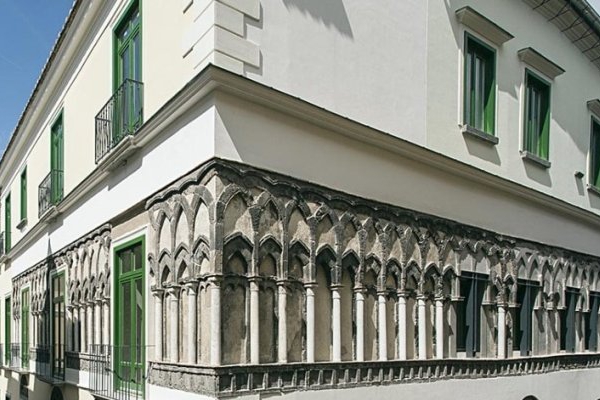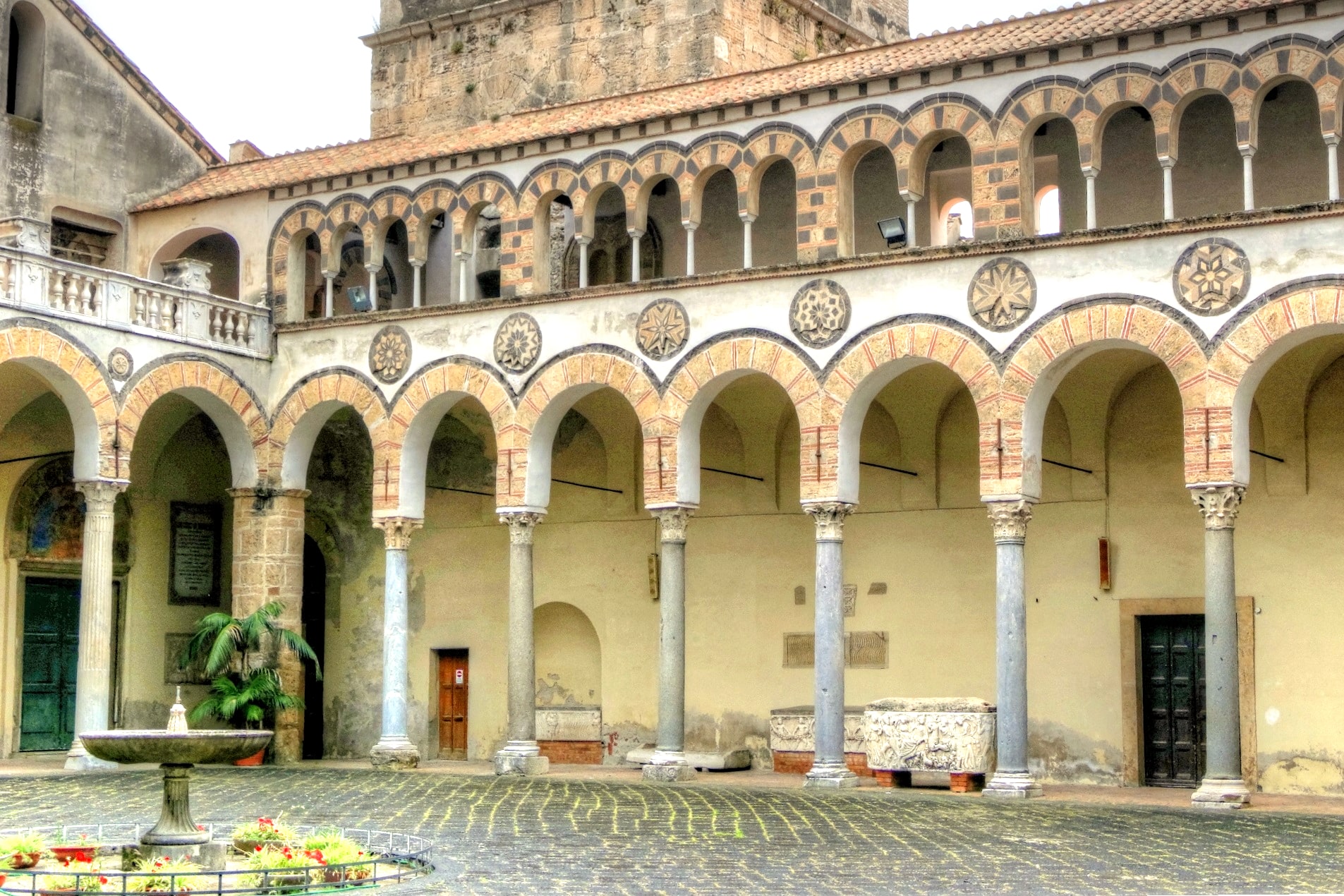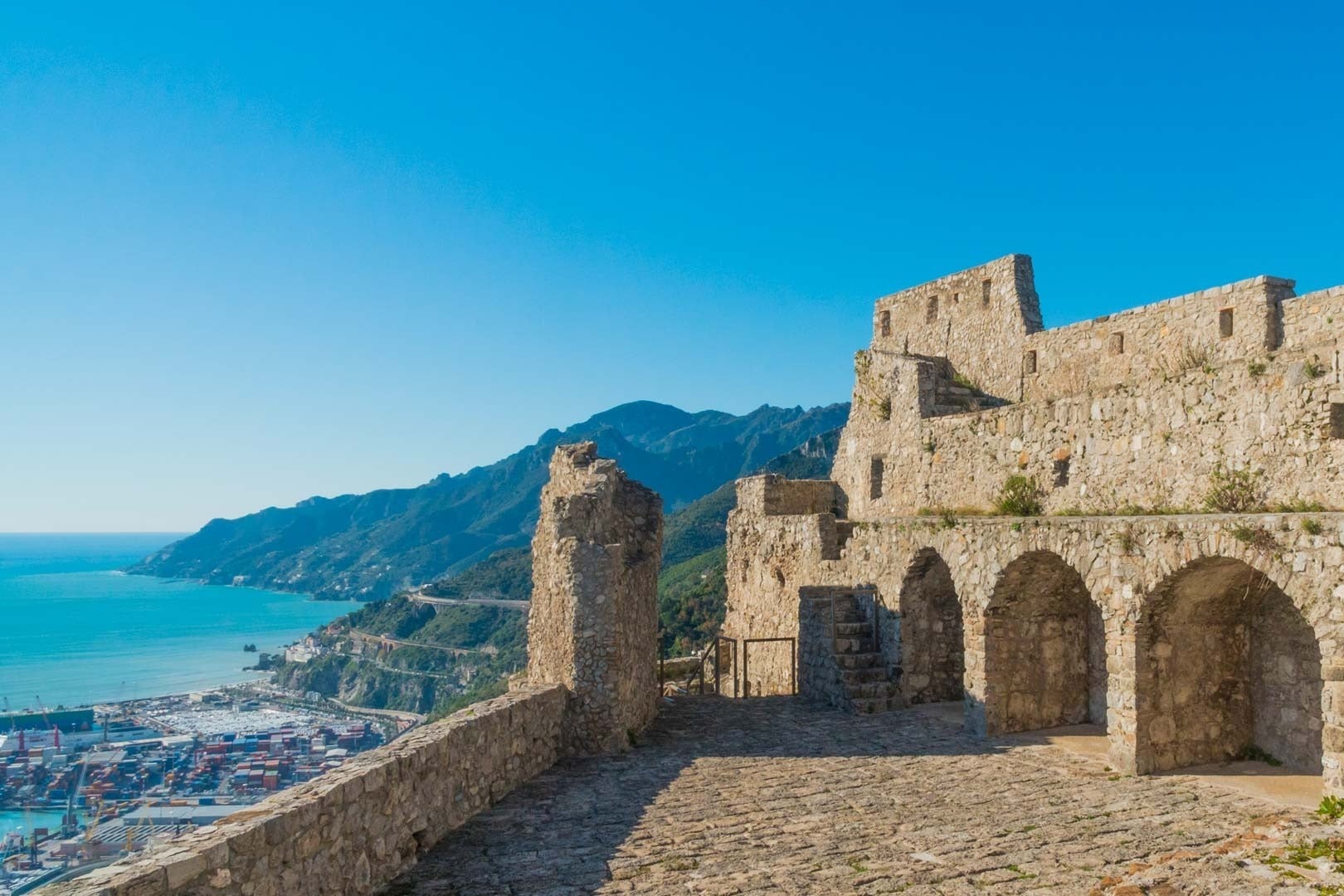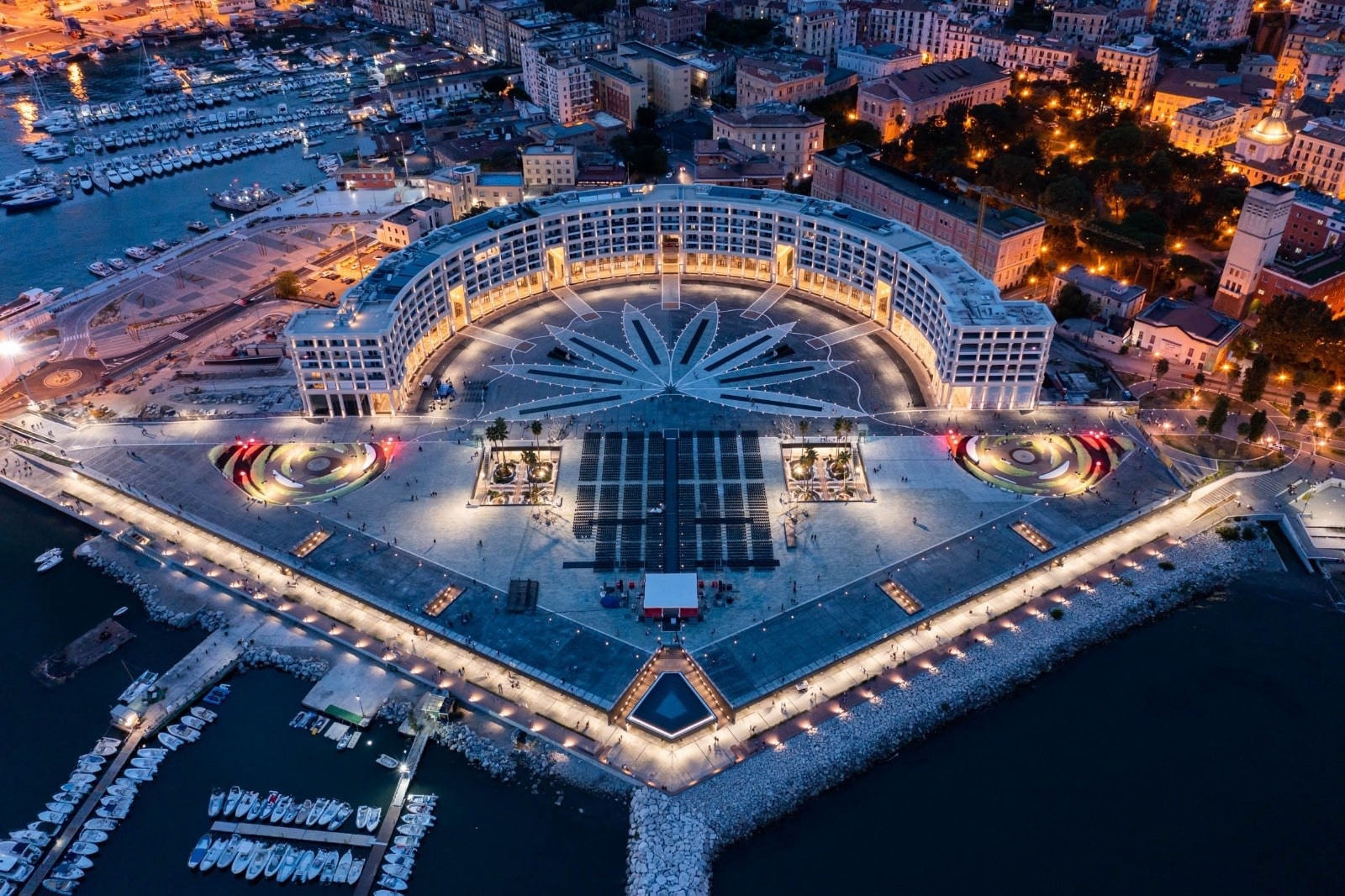The history of Salerno
The history of the city of Salerno is very ancient, with the earliest historical evidence dating back to the Etruscan age. Throughout the centuries different civilizations have left their mark: the Romans, the Lombards, the Normans, the Swabians, the Angevins and so on, until 1944 when it was elected capital of Italy from February 11 to July 15.

The origins of the city of Salerno
The history of the city of Salerno has its roots in very ancient times. The first artifacts found in the area date from around the 6th century B.C. and tell the story of an Etruscan settlement. Thanks to the numerous archaeological finds, it has been shown how, since ancient times, the area represented an important strategic trading point, such that it was a hub of fusion between different cultures.
It was during the period of Roman Imperialism that the town acquired the name Salernum, before suffering barbarian invasions and being subsequently occupied by the Goths, Byzantines, Normans, and Lombards. During the course of Longobard rule the town experienced a period of magnificence and wealth, such that it was recorded on local coins as Opulenta Salernum.

The principality of Salerno: Norman domination
In 839 A.D. it became the capital of an independent Longobard principality, the "Principality of Salerno". This was governed by Duke Arechi II, who fixed his residence in the magnificent and majestic castle that currently possesses his name and overlooks the hill where Castrum Salerni is located. Besides that, under his rule originated the famous Salerno Medical School, the most important source of medical knowledge in Europe in the Middle Ages.
Similarly, Robert Guiscard, the Norman monarch who conquered Salerno in 1077, named it the capital of his domain, and it was as a testament to this magnificence that the royal palace (Castel Terracena) and the lofty cathedral, namely the Cathedral of St. Matthew, were built.

The Swabian domination in Salerno
Subsequently, with the dynasty of the Swabians, at the end of the 12th century, the son of Emperor Frederick II (King Manfred of Sicily) ordered the construction of a basin that still bears his name, and later, in 1259, the St. Matthew's Fair was also born, strongly desired by Giovanni Da Procida as a means of developing the local economy. The tax relief was institutionalized by Manfred of Swabia in agreement with the Salernitan Church, which managed and administered the fair event as it was connected with the celebration of the feast day dedicated to the apostle Matthew (now the Patron Saint of the city of Salerno).
Looking for a hotel in Salerno?
Discover the main accommodations among hundreds of hotels, B&Bs and vacation rentals for a wonderful stay in Salerno, Amalfi Coast or Cilento.

Angevin domination and the "fall" of Salerno
After the Angevin takeover, much of the province of Salerno became the territory of the Princes of Sanseverino, powerful feudal lords who amassed considerable political and administrative power, attracting numerous artists and men of letters. In the early decades of the 16th century, the last descendant of the Sanseverino princes came into conflict with the Spanish government, causing the beginning of a long period of decline for the city, as the kings focused their attentions exclusively on the capital: Naples.
Later, unfortunately, the city was hit by several catastrophic earthquakes and plagues, which claimed thousands of lives.
It was not until a period of Spanish domination, which lasted until the 18th century, that there was a slow revival of the city, with the construction of a high number of buildings and churches, which still characterize the main streets of Salerno's historic center.
In 1799 Salerno became part of the Parthenopean Republic and saw a period of Napoleonic government. Joachim Murat decreed the closure of the Salerno Medical School, which had seen a period of decline for decades to the level of a theoretical school.

Salerno's recent history
After the Unification of Italy a slow urban development continued to proceed until World War II. In October 1943, the first assembly of the Badoglio government (president of the Council after the fall of Mussolini) took place inside what is now the City Hall of Salerno. In 1944, the city was a leading player in the rebirth of Italy following the misdeeds of the war, welcoming the first post-fascist government and the Royal family, becoming to all intents and purposes the Capital of Italy.
The postwar period was difficult for all southern Italian cities, but Salerno, with great vigor, managed to improve little by little.
Today Salerno is an important cultural center in Campania and Italy, thanks to its long and eventful history. Because of its varied history, the city is characterized by a rich and flourishing culture. It is urbanistically divided into three distinct areas: the medieval sector, the 19th century sector, and the postwar area (with the highest population density). Nowadays, the city of Salerno is an important gateway for travelers to the Amalfi Coast, Naples, or Cilento, not only due to its strategic location, but an interesting city to visit because of its centuries-old history and modern urban planning.






